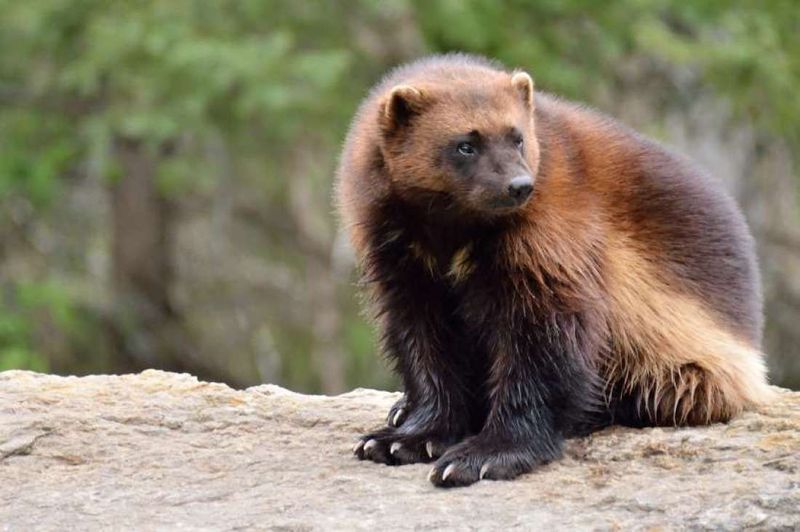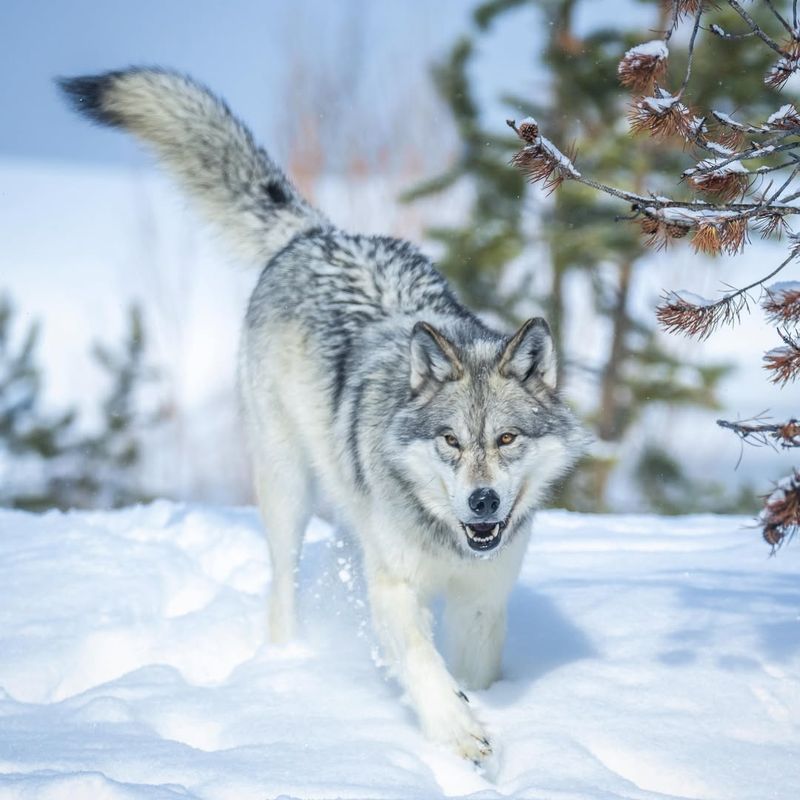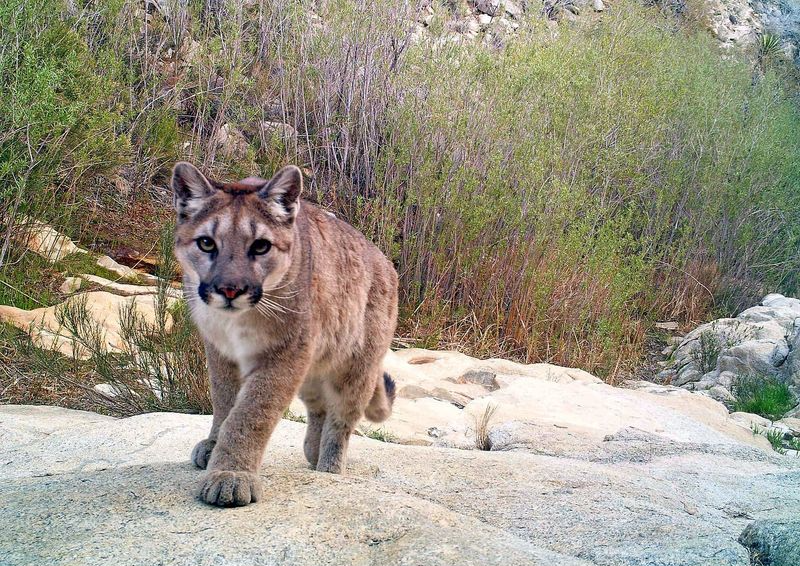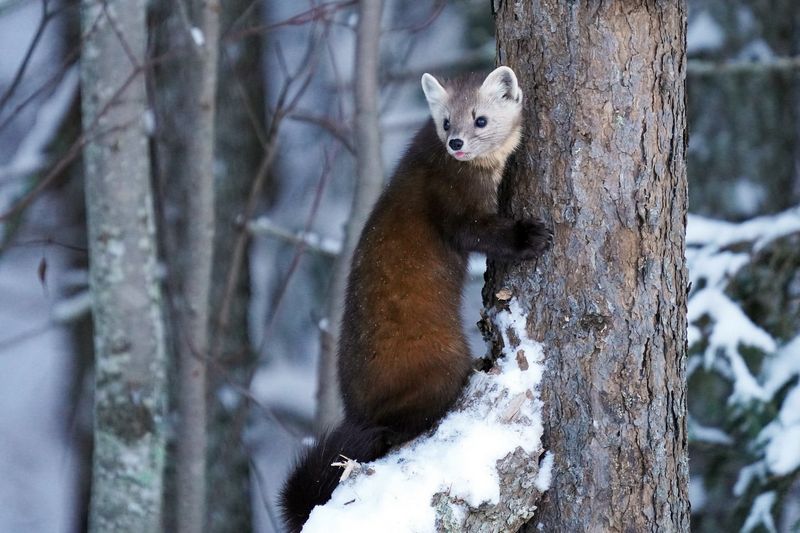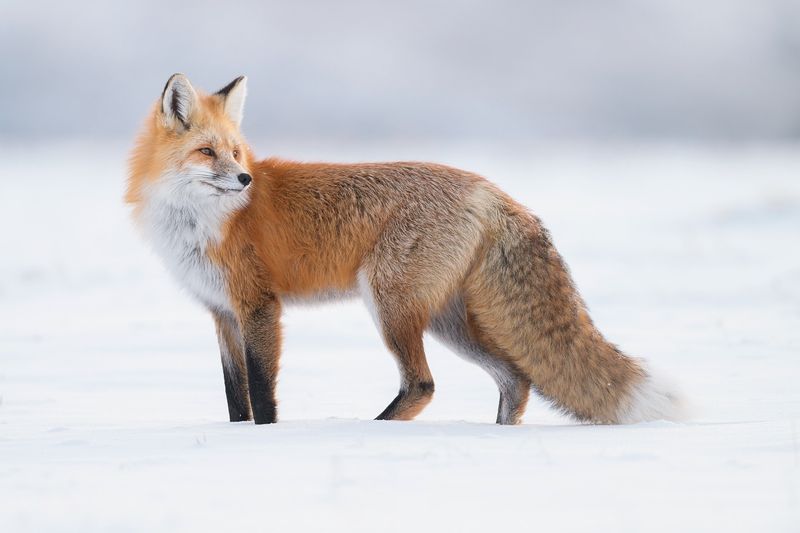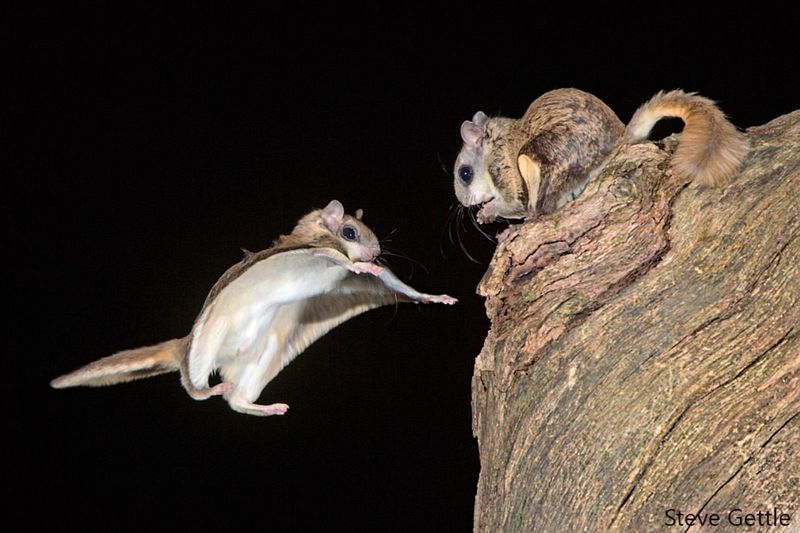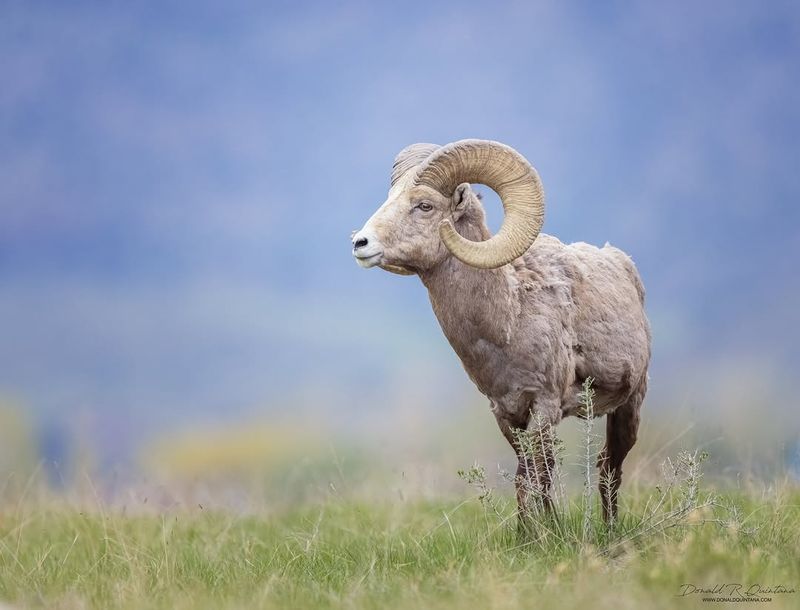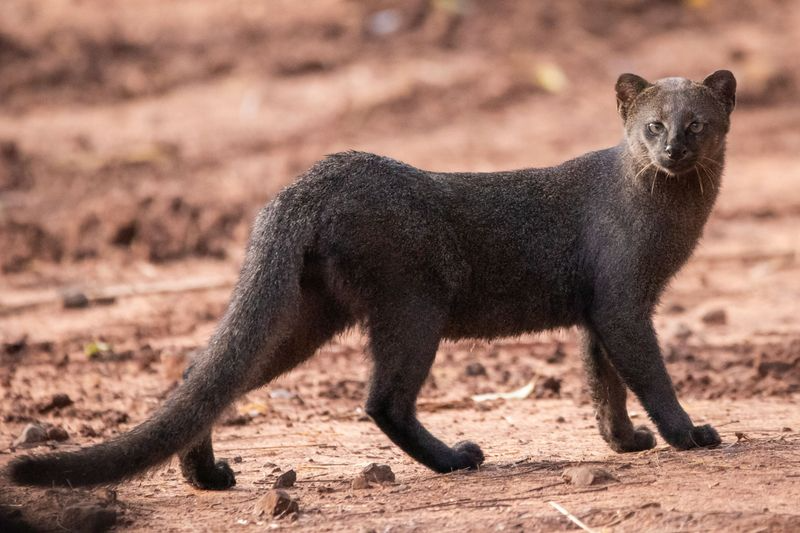📖 Table of Content:
Ever feel like nature is playing hide-and-seek? North America is packed with incredible wildlife, but some animals seem to have mastered the art of disappearing.
Whether they’re blending into the landscape, sticking to the shadows, or living in places so remote you’d need a map, a compass, and a lot of luck to find them, these creatures aren’t ones you’ll stumble upon during your average hike.
From the elusive lynx that’s basically a ghost on snow-covered trails, to the wolverine, a real-life superhero of the animal kingdom, these animals are as fascinating as they are hard to find. So, grab a cup of coffee and get ready to learn about these mysterious creatures.
1. Canada Lynx
If North America had a mascot for mystery, it might just be the Canada lynx. This elusive wildcat thrives in the snow-covered boreal forests of Canada and parts of the northern United States, including Alaska and the Rockies.
With their oversized, snowshoe-like paws and thick, silvery fur, they’re perfectly adapted to cold, snowy environments. Their tufted ears and sharp eyes give them an edge when hunting, primarily targeting snowshoe hares, which make up most of their diet.
But what makes the lynx so hard to find? For starters, it’s a nocturnal creature, hunting under the cover of darkness and retreating to dense cover during the day.
They’re also incredibly silent movers, their wide feet allowing them to traverse snow without leaving much of a trace. Even experienced trackers can struggle to pick up their trail. If you do happen to spot one, consider it a gift from nature.
2. Wolverine
If the wilderness had an ultimate survivor, the wolverine would take the crown. These fierce and muscular carnivores roam some of the most inhospitable terrains in North America, from the dense forests of Alaska and Canada to the high-altitude alpine zones of the Rocky Mountains.
Wolverines are notorious loners, often traveling hundreds of miles in their territory. Their elusiveness comes from a combination of factors: they live in remote areas, have low population densities, and are highly mobile.
They’re also incredibly smart, adapting their habits to avoid human activity. Seeing a wolverine in the wild is a rare privilege, and those who do often describe it as a once-in-a-lifetime encounter
For most of us, however, the wolverine remains a creature of legend—known more for its strength and determination than its visibility.
3. Gray Wolf
The gray wolf is both a symbol of untamed wilderness and one of the most misunderstood predators in North America. Once widespread across the continent, wolves were hunted to near extinction in many regions.
Today, they’re making a slow comeback in protected areas, but they remain hard to spot. Wolves are highly social animals, living and hunting in packs, but their wariness of humans and preference for remote habitats make encounters rare.
If you’re lucky enough to hear their iconic howl echoing through the forest, it’s likely a way for the pack to communicate, whether it’s to regroup or mark their territory.
But actually seeing one? That’s a much bigger challenge. Wolves are nocturnal hunters, using their intelligence, teamwork, and endurance to take down prey like deer and elk. During the day, they rest in secluded areas far from human activity.
4. Mountain Lion
The mountain lion goes by many names—cougar, puma, panther—but one thing is consistent: its reputation as one of the most secretive predators in North America.
They’re often referred to as “ghost cats” because of their ability to appear and disappear without a trace.
Encounters are rare, and most people will only ever see signs of their presence, such as tracks or scat. Their tawny coats provide excellent camouflage, and their preference for hunting at dawn or dusk helps them stay hidden.
Despite their stealth, mountain lions play a vital role in maintaining healthy ecosystems by controlling prey populations.
5. American Marten
Think of the American marten as the mischievous acrobat of North America’s forests. This small, tree-dwelling member of the weasel family is quick, curious, and almost impossible to pin down.
Found in northern forests and mountain ranges, martens prefer old-growth habitats with plenty of cover and food sources, like birds, squirrels, and berries. Their agility in the treetops is unmatched—they can leap between branches with ease, making them difficult to spot even if they’re right above you.
Martens are active during twilight hours, adding to their elusiveness. Their small size and ability to vanish into tree hollows or dense brush make them a challenge to track. They’re also highly adaptable, thriving in harsh winters and finding food even in the leanest times.
6. Eastern Spotted Skunk
Forget everything you know about skunks—this pint-sized acrobat is nothing like its striped cousin. The eastern spotted skunk is smaller, faster, and far more elusive.
Found in brushy areas, grasslands, and rocky outcrops, it’s a nocturnal creature that spends its days hidden in burrows or dense vegetation. What sets it apart is its agility; it’s one of the few skunks that can climb trees with ease, making it even harder to find.
The eastern spotted skunk is also known for its unique defensive behavior. Before spraying, it performs a handstand, standing on its front paws while kicking its hind legs in the air—a move that’s both a warning and an acrobatic spectacle.
These skunks are rare and declining in many areas due to habitat loss, so seeing one in the wild is a true rarity. If you do encounter one, admire its antics from a safe distance—it’s small, but it can pack a punch.
7. Red Fox
The red fox is perhaps the most charismatic member of this list. With its bushy tail, pointed ears, and sharp intelligence, it’s the animal we often associate with cleverness and cunning. But despite their widespread presence, they’re not easy to spot.
Foxes are primarily nocturnal, venturing out at dusk or dawn to hunt small mammals, birds, and insects. During the day, they retreat to dens or thick cover.
Their reddish coats, though vibrant, blend surprisingly well with their surroundings, making them almost invisible in tall grass or wooded areas. You’re more likely to see their tracks in the snow or hear their eerie, high-pitched calls than catch a glimpse of the animal itself.
8. Northern Flying Squirrel
The northern flying squirrel is a creature straight out of a fairy tale. Found in the treetops of northern forests, these nocturnal mammals are rarely seen, partly because of their nighttime habits and partly because of their ability to glide silently between trees.
They don’t actually fly but use a special membrane called a patagium to glide distances of up to 150 feet.
Flying squirrels are shy, preferring the safety of dense tree canopies where they feed on fungi, seeds, and tree sap. Their large, dark eyes help them navigate in low light, and their soft, brown-gray fur makes them blend perfectly with tree bark.
Spotting one requires a combination of luck and patience—you’ll need a flashlight, a quiet night, and a keen eye to catch their gliding silhouettes.
9. Bighorn Sheep
If you’ve ever gazed at a rugged mountain landscape and thought it looked empty, think again. Bighorn sheep are masters of blending into their surroundings. Their brown coats provide excellent camouflage, making them nearly invisible against the rocky backdrop.
Bighorn sheep live in groups, but they’re most visible during the fall rutting season, when males clash in dramatic head-butting battles. Outside of that, they stick to high, remote areas where predators can’t easily reach them.
10. Jaguarundi
The jaguarundi might just be North America’s most mysterious wildcat. With its sleek, elongated body and short legs, it looks more like an otter than a typical wildcat.
Jaguarundis are diurnal, meaning they’re active during the day, but their low numbers and secretive behavior make sightings almost unheard of.
They’re solitary and prefer to hunt small mammals and birds in dense cover. Their reddish or grayish coats help them blend into their surroundings, and they’re experts at moving through thick vegetation without being seen.
This enigmatic cat is a reminder of just how much mystery still exists in the wilds of North America.


